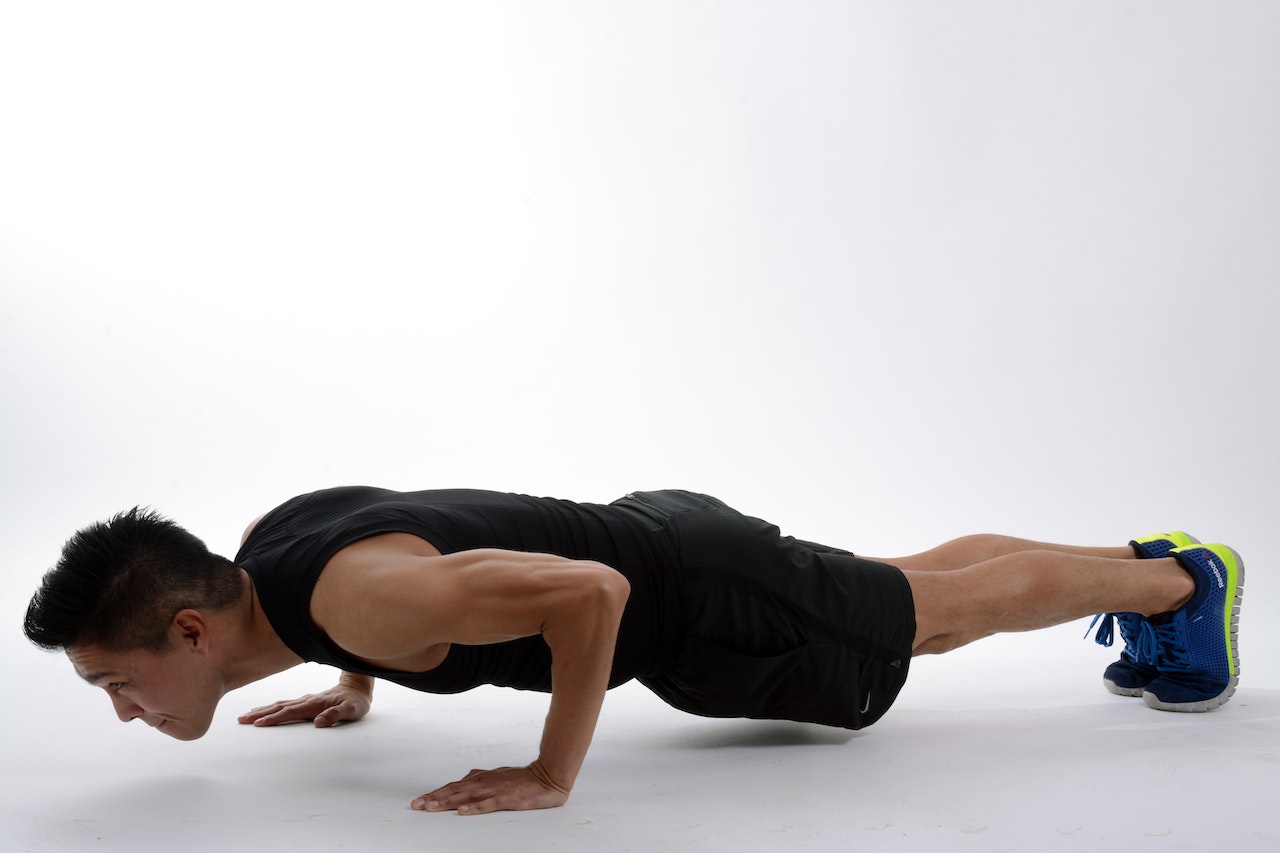Understanding The Connection Between Exercise And Bone Health - How Exercise Can Improve Bone Health
In this article, understanding the connection between exercise and bone health in more detail. Exercise is well known for its beneficial effects on overall health, including improving cardiovascular health, reducing the risk of chronic diseases, and promoting weight management.
Author:Karan EmeryReviewer:Katharine TateMar 15, 202336 Shares885 Views

In this article, understanding the connection between exercise and bone healthin more detail.
Exercise is well known for its beneficial effects on overall health, including improving cardiovascular health, reducing the risk of chronic diseases, and promoting weight management.
However, exercise also plays an important role in maintaining bone health. The human skeleton is a dynamic tissue that responds to mechanical forces, such as those generated during exercise.
As a result, regular physical activity can help maintain and even increase bone density, reducing the risk of osteoporosis and fractures.
How Exercise Affects Bone Health - The Facts You Should Know
Exercise is essential for overall health, including maintaining strong bones. The human skeletal system is dynamic and responds to physical stress, such as that generated during exercise.
By engaging in regular physical activity, we can help promote optimal bone health and reduce the risk of osteoporosis and fractures.
We'll explore the facts you should know about how exercise affects bone health. One of the primary ways that exercise affects bone health is by stimulating bone formation.
When we engage in weight-bearing exercises, such as walking, running, or resistance training, we place stress on our bones.
This stress signals the body to produce more bone-forming cells (osteoblasts), leading to an increase in bone density. In contrast, a sedentary lifestyle can lead to bone loss, as the body resorbs more bone than it produces.
Resistance training, in particular, is effective in promoting bone formation. By using weights or resistance bands, we can target specific muscle groups, placing more stress on the bones in those areas.
This can help improve bone density and reduce the risk of fractures. However, it's essential to remember that not all exercise is created equal when it comes to bone health. While endurance exercise such as running or cycling can be beneficial for cardiovascular health, it has limited effects on bone density.
Therefore, it's important to incorporate weight-bearing and resistance exercises into your routine to promote optimal bone health. In addition to promoting bone formation, exercise can also help improve balance and coordination. This is particularly important for older adults, who may be at increased risk of falls and fractures.
By improving balance and coordination, we can reduce the risk of falls and improve overall bone health. Finally, it's important to remember that nutrition plays a crucial role in bone health. Adequate intake of calcium, vitamin D, and other nutrients is essential for bone formation and maintenance.
Understanding The Connection Between Exercise And Bone Health - The Science Behind Exercise And Strong Bones
Strong bones are vital for maintaining an active, healthy lifestyle. Our bones provide support, protect our vital organs, and help us move. However, as we age, bone loss can occur, leading to an increased risk of fractures and osteoporosis.
While genetics and other factors play a role, exercise is a powerful tool for maintaining and improving bone health. We'll explore the science behind exercise and strong bones.
Bone is a dynamic tissue that responds to mechanical forces. When we engage in weight-bearing exercises, such as walking, running, or resistance training, our bones experience mechanical stress.
This stress stimulates the bone-forming cells (osteoblasts) to lay down new bone tissue. Conversely, when we are sedentary, bone resorption (the breakdown of bone tissue) exceeds bone formation, leading to bone loss.
Weight-bearing exercise is particularly effective for maintaining bone density. High-impact activities such as jumping, dancing, and plyometric exercises can provide an even greater stimulus for bone formation. However, low-impact activities such as walking and resistance training can also be beneficial for maintaining bone health.
Additionally, exercise can help improve balance and coordination, reducing the risk of falls and fractures. This is particularly important for older adults, who may be at increased risk of falling.
It's important to note that different types of exercise have varying effects on bone health. Endurance exercises, such as long-distance running or cycling, while beneficial for cardiovascular health, has limited effects on bone density.
Therefore, it's recommended to incorporate a variety of weight-bearing and resistance exercises into your routine for optimal bone health. Nutrition also plays a crucial role in bone health. Adequate intake of calcium, vitamin D, and other nutrients is essential for bone formation and maintenance.

How does exercise impact bone and joint health?
Maximizing Bone Health With Physical Activity - An Expert Guide
Maximizing bone health with physical activity is an important consideration for people of all ages. Bones are living tissues that respond to the physical stress generated during physical activity.
Exercise can help promote optimal bone health and reduce the risk of fractures and osteoporosis. In this expert guide, we'll explore how you can maximize your bone health through physical activity.
First and foremost, weight-bearing and resistance exercises are key to promoting bone health. Weight-bearing exercises such as walking, running, and hiking, require your body to support your weight, which places stress on your bones.
This stress signals your body to produce more bone-forming cells (osteoblasts) leading to an increase in bone density. Resistance training, such as weightlifting or resistance band exercises, can also help stimulate bone formation by placing additional stress on the bones.
In addition to weight-bearing and resistance exercises, high-impact activities can be particularly effective for promoting bone health.
Activities such as jumping, dancing, or plyometric exercises can provide an even greater stimulus for bone formation. However, it's important to start slowly and gradually increase the intensity of these activities to avoid injury.
It's also important to note that different types of exercise have varying effects on bone health. Endurance exercises, such as long-distance running or cycling, while beneficial for cardiovascular health, has limited effects on bone density.
Therefore, it's recommended to incorporate a variety of weight-bearing and resistance exercises into your routine for optimal bone health.
Maintaining good posture and balance is also essential for bone health, particularly in older adults who may be at increased risk of falls and fractures.
Yoga and Pilates are excellent forms of exercise that can help improve posture, balance, and flexibility, while also promoting bone health.
Finally, nutrition plays a crucial role in bone health. Adequate intake of calcium, vitamin D, and other nutrients is essential for bone formation and maintenance.
Therefore, it's recommended to consume a diet rich in calcium and vitamin D or consider taking supplements if needed.
People Also Ask
How Does Exercise Affect Bone Health?
Exercise stimulates the production of bone-forming cells, leading to an increase in bone density. Weight-bearing and resistance exercises are particularly effective for promoting bone health.
What Types Of Exercise Are Best For Bone Health?
Weight-bearing exercises such as walking, running, and hiking, as well as resistance training, are key for promoting bone health. High-impact activities such as jumping and dancing can also be effective.
Can Exercise Help Prevent Osteoporosis?
Yes, exercise can help prevent osteoporosis by promoting bone formation and density. Weight-bearing and resistance exercises, as well as high-impact activities, are particularly effective in reducing the risk of osteoporosis.
How Much Exercise Is Needed For Optimal Bone Health?
Experts recommend at least 150 minutes of moderate-intensity exercise per week for overall health. For bone health specifically, it's important to incorporate weight-bearing and resistance exercises, as well as high-impact activities, into your routine. Consult with a healthcare professional to determine the best exercise plan for you.
Conclusion
Understanding the Connection between Exercise and Bone Health is an important tool for maintaining bone health.
Regular physical activity, particularly weight-bearing exercise, can help maintain or increase bone density and reduce the risk of osteoporosis and fractures. However, it's essential to remember that different types of exercise may have varying effects on bone health.
Therefore, it's recommended to consult with a healthcare professional or qualified fitness trainer to determine the most suitable exercise regimen to promote optimal bone health.
By incorporating regular exercise into our daily routine, we can keep our bones strong and healthy, improving our overall quality of life.

Karan Emery
Author

Katharine Tate
Reviewer
Latest Articles
Popular Articles
